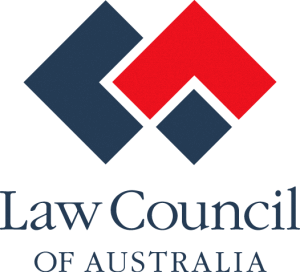- TAX LAWYERS, TAX ADVISORY, TAX COMPLIANCE, EXPATS - SYDNEY, BRISBANE, MELBOURNE, CANBERRA
- 1300 334 518
- admin@waterhouselawyers.com.au
- Filter by
- Categories
- Tags
- Authors
- Show all
- All
- Cryptocurrency Tax
- General
- International Tax
- Superannuation
- Tax Advice
- Tax Audit
- Tax Debt
- Tax Dispute
- Tax Planning
- Tax Related Crimes
- Tax Residency
- TPB Investigation
- All
- 183-day test
- accessing your super
- accommodation
- active asset
- Administrative Appeals Tribunal (AAT)
- administrative penalty
- advance pricing arrangement
- Amazon
- appeal
- appeals
- Application
- arrest
- assessable income
- asset disposal
- asset protection
- asset seizure
- AssetDivision
- associated benefits
- ATO
- ATO Investigation
- ATO investigation request
- ATO registration
- ATO scam
- ATO scrutiny
- audit
- audits
- AUSTRAC
- Australia
- Australian Goods and Services Tax
- Australian residency
- Australian Resident
- Australian tax laws
- Australian Taxation Office
- Australian Taxation Office (ATO)
- bank interest
- bankruptcy
- BAS
- Base Erosion and Profit Shifting
- BASfraud
- basics of super
- BASrefund
- BASrefundfraud
- benchmark
- benefits
- BEPS
- Bernie Kerr
- BernieKerr
- betting
- business
- CAN
- capital
- capital gain
- capital gains tax
- capital gains tax (CGT)
- cash flow boost
- cease and desist notice
- central management and control
- CFC
- CFT
- CGT
- CGT event k3
- cgt events
- Chinese tax
- commissioner of taxation
- CommissionerConsiderations
- common reporting standard
- Common reporting systems
- CommonLaw
- Commonwealth Director of Public Prosecutions (CDPP)
- Commonwealth employees
- Commonwealth Government employee
- communication
- companies
- company
- compliance
- compliance efforts
- compliance history
- concessions
- conclusive evidence
- conditions of release
- contractor
- Controlled foreign companies
- controlled foreign trust rules
- coronavirus
- Court
- court appearance details
- court attendance notice
- Court Attendance Notice (CAN)
- covid-19
- credit
- Creditors Petition
- CreditRating
- criminal charges
- criminal offense
- criminal record
- CRS
- crypto
- crypto tax
- cryptocurrency
- cryptocurrency tax
- cryptotax
- CSS
- data matching
- debt collection
- debt finance
- debt recovery actions
- decision on objection
- deductions
- default assessment
- default assessments
- defendant information
- deregistration.
- development agreement
- digital products
- director
- director penalty notice
- Director Penalty Notice (DPN)
- discretionary trust
- discretionary trusts
- dispute
- disqualification
- diverted profits tax
- dividends
- divorce
- DivorceProceedings
- documentation
- domicile
- domicile of choice
- Domicile Test
- double tax agreement
- double taxation
- Double Taxation Agreements
- dpn
- DPO
- DPT
- DTAs
- early release of super
- Ebay
- electronic distribution platforms
- eligibility
- eligible tax debt
- employee
- employee share scheme
- employees
- Employment
- Enforcement
- entitlement
- EquitableDistribution
- errors
- ESS
- estate planning
- evasion
- evidence
- exemptions
- expat
- expat;expatriate
- expatriate
- experienced tax experts
- expert legal assistance
- expert tax advice
- ExpertAssistance
- ExpertRepresentation
- facts
- failure to lodge
- failuretolodge
- falseinvoicescheme
- falseinvoicing
- FamilyCourt
- familylaw
- fbt
- FBT year
- Federal Court
- financial circumstances
- financial penalties
- FinancialChallenges
- FinancialLandscape
- FinancialLosses
- Financing
- fines
- FirstHomeBuyersGrant
- florist
- foreign assets
- foreign beneficiaries
- foreign companies
- foreign company
- Foreign income
- foreign super funds
- foreign tax offsets
- foreign trust distributions
- foreigncompany
- Formal Interview
- fraud
- fringe benefits
- fringe benefits tax (FBT)
- fringebenefitstax
- gambling
- Gambling Tax
- garnishee arrangement
- Garnishee Notice
- Garnishee Order
- general interest charge
- general interest charge (GIC)
- GIC
- GICRemission
- global income
- gold
- grounds for objection
- GST
- GST act
- GST on overseas online purchases
- GST refund fraud
- GSTrefund
- GSTrefundfraud
- guarnishee
- Guidance
- Gumtree
- HECS
- HELP
- high-risk arrangements
- homeownership
- Hong Kong resident
- horse racing winnings
- ICO
- Identity
- identityfraud
- illegal early release
- imprisonment
- in-house facilitation
- income tax
- Income Tax Assessment Act 1936
- income tax returns
- income-producing activity
- Individuals
- Information and Documents
- input tax
- insolvency
- instalments
- Interest
- InterestRates
- international
- international businesses
- international tax
- internationaltax
- investigations
- investments
- JobKeeper
- land tax
- lawyer
- legal
- legal action
- legal advice
- legal assistance.
- legal costs
- legal help
- legal proceedings
- legal professional privilege
- Legal representation
- LegalAdvice
- legalrepresentation
- lifetime limit
- limited recourse borrowing arrangement
- liquidation
- litigation
- loans
- Local Court
- low-value goods
- LRBA
- lump sums
- main residence
- main residence exemption
- matrimonialpool
- methodology
- minor benefits
- mitigating circumstances
- monitoring
- motor vehicles
- MyGov accounts
- nationality
- negotiation
- New South Wales
- New South Wales police
- non resident
- non-compliance
- non-professional punter
- Non-resident tax
- notice of review
- notional taxable value
- NSW
- NSW Payroll liability
- objection
- offense details
- Office of state revenue
- offshore business
- offshore financial crime
- offshore income
- offshore investments
- Operations
- ordinary concepts
- partnerships
- PAYG
- payment
- payment arrangement
- payment plan
- paymentplan
- payroll tax
- PayrollTax
- penalties
- penalties remission
- pension
- permanent place of abode
- permanentplaceofabode
- personal tax obligation
- physical presence
- planning for the future
- preparation for court
- preservation age
- pricing
- Private Ruling
- Professional Gambling
- professional punter
- profit
- promissory note
- promoters
- property development
- prosecution
- prosecutor
- PSS
- purchaser duty
- recreational activity
- reduced penalties.
- reduction
- registration
- regulations
- regulatory scrutiny
- release from tax debt
- remission
- remission of interest
- rental income
- repayment agreement
- reporting
- representation
- Reputation
- reputation damage
- Request for Information
- residency
- Resides Test
- retirement
- retirement exemption
- retirement savings
- returning to australia
- revenue
- RevenueRuling
- rollover
- s19B
- sales tax
- SAT
- Section 353-10
- Section 353-10 notice
- section 8C
- self managed super fund
- self-managed superannuation fund
- settlement
- SG
- Sharia law
- simplifiedtransferpricing
- simplifiedtransferpricingrecordkeeping
- SIS Act
- skill level.
- small business
- small business CGT tax concessions
- smallbusiness
- SME Business protection
- SMSF
- SMSF DISQUALIFICATION
- SMSF trustee disqualification
- special circumstances
- State Taxation Administration
- statementofclaim
- statutory demand
- statutory interest
- stimulus package
- Student Loan
- subdivision
- summons
- super
- super funds
- Super test
- superannuation
- superannuation eligibility.
- superannuation guarantee
- superannuation law
- Superannuation Test
- supervision
- superyacht crew
- superyacht tax
- support
- surcharge land tax
- systematic basis
- tax
- tax agent deregistration
- tax agent investigation
- tax assessment
- tax audit
- tax avoidance
- tax avoidance scheme
- tax consequences of gambling
- tax credit.
- tax crime
- tax debt
- Tax Deductions
- tax dispute
- tax evasion
- tax fraud
- tax implications
- tax issues
- Tax law
- tax lawyer
- tax lawyers
- tax legislation
- tax liabilities
- tax liability
- Tax Litigation
- tax objection
- tax obligation
- tax obligations
- tax officer
- tax on lump sums
- tax on pensions
- tax penalties
- tax penalty
- tax planning
- Tax Practitioners Board
- Tax Practitioners Board (TPB)
- tax residency
- tax residency tests
- tax restructuring
- tax return
- tax returns
- tax review
- tax treaties
- tax;residency;resident;linternationaltax
- taxagent
- taxation
- taxation debt
- taxation law
- Taxation Practitioners Board
- Taxation Ruling TR 98/17
- TaxAvoidance
- TaxBurden
- TaxCompliance
- taxdebt
- taxdebtdivorce
- TaxExperts
- taxlawyer
- taxpractitioenrsboard
- taxreturns
- technical expertise
- template letter
- testamentary trusts
- thin capitalisation
- time limits
- tipping system
- TPB
- TPB enquiry
- tpb investigation
- tpbinvestigatio
- tpbreview
- transfer pricing
- trust deed
- trust distributions
- trustee
- trustee deed
- trustee responsibilities
- trustees
- trusts
- TSL
- undisclosed income
- uperannuation
- VAT
- voluntary disclosure
- voluntarydisclosure
- warning letter
- Waterhouse Lawyers
- Waterhouse Tax Lawyers
- Waterhouse Taxation Lawyers
- WaterhouseLawyers
- winding up
- windingup
- withholding taxes
- work-related items
- work-related purchases
- All
- Alex V
- Ali G
- Amanda Guruge
- Amanda P
- Andreas P
- Andrew H
- Arran B
- Bill L
- Bob W
- Brendan P
- Bruce Collins
- Carolin L
- Chris W
- Dario Sabljak
- Didier G
- Danny M
- Waterhouse Tax Lawyers
- Helen P
- Graeme N
- Jack C
- Jasmine A
- Jennifer P
- Keith T
- Kelly O'Rourke
- Lisa B
- Ludan B
- Lauren F
- Louisa B
- Lourdes W
- Maria M
- Michael K
- Martha C
- Michael Cranston
- Melissa P
- John T
- Rosemary P
- Naadirah S
- Nigel T
- Mike G
- Olivia Locke
- Paul V
- Philip K
- Raphael G
- Reid M
- Rita B
- Shane B
- Stuart E
- Tania Waterhouse
- WpHelp SageMG
- Yuvin M
26 February 2024
Published by Tania Waterhouse on 26 February 2024
Categories
In times marked by soaring interest rates, a cost-of-living crisis, and the aftermath of a pandemic, many individuals and businesses find themselves grappling with the challenges […]
13 February 2024
Published by Tania Waterhouse on 13 February 2024
Categories
You should act immediately if you have received an ATO Statement of Claim because ignoring a tax debt can have serious legal and financial consequences for […]
9 February 2024
Published by Tania Waterhouse on 9 February 2024
Categories
The treatment of a tax debt in divorce proceedings is a critical consideration when the parties assets are being divided between them. Tax debts incurred by […]
15 November 2021
Published by Tania Waterhouse on 15 November 2021
Categories
If your tax debt includes tax penalties and/or general interest charge (GIC) you can apply for a reduction or elimination of the tax penalty and/or GIC. […]
4 August 2021
Published by Waterhouse Tax Lawyers on 4 August 2021
Categories
The ATO does not 'cut a deal' with taxpayers on a commercial basis. The law doesn't allow it. But there are some parts of the law that allow for a tax debt to be reduced. This article explores these options.
2 July 2021
Published by Tania Waterhouse on 2 July 2021
Categories
Help: I’ve got a tax debt. I need a Payment Plan The ATO is starting to ramp up its debt recovery actions. So if you have […]
Credentials
Recognition




